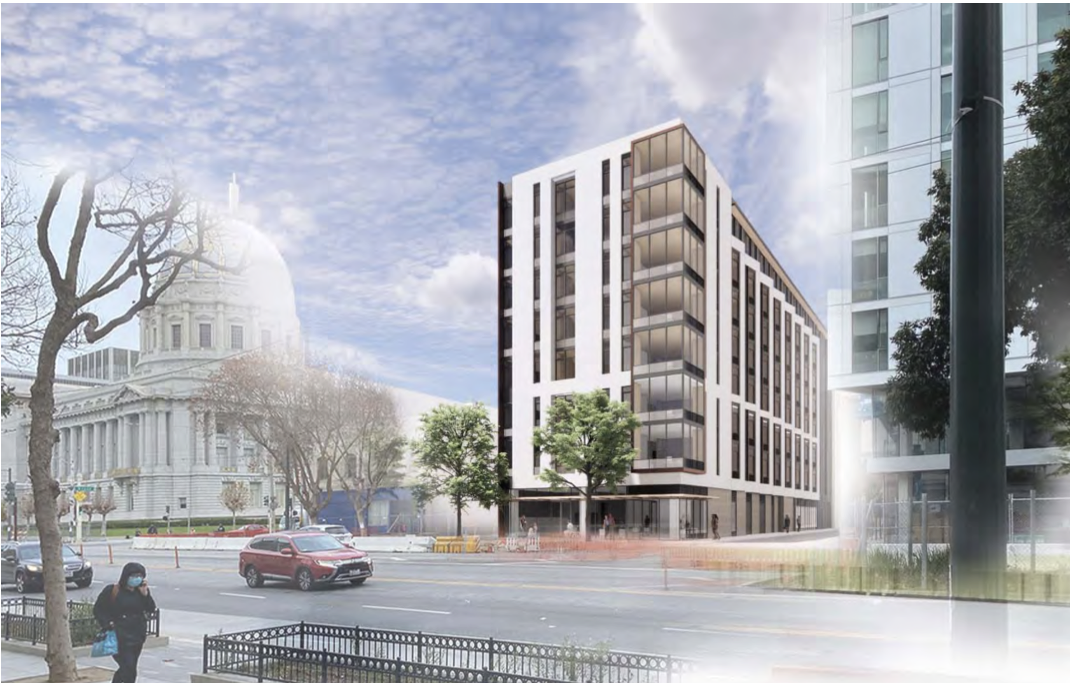A key affordable housing project in San Francisco appears to be back on track after a loan for the project evaporated with the sudden collapse of Silicon Valley Bank.
A $52 million loan for construction on The Kelsey Civic Center—a 112-unit apartment building slated to go up on Van Ness Avenue across the street from City Hall—was supposed to close the very day the bank imploded. Officials for the organizations behind the project, which includes the nonprofit Mercy Housing and the eponymous development company behind the project, had been negotiating the loan for months.
On Friday, officials said they were finalizing a new loan with an unidentified lender and that construction is expected to begin at the end of April, just one month later than originally planned.
Anticipation for The Kelsey has been growing, not only due to San Francisco’s extreme housing shortage and the building’s close proximity to City Hall. The project is also relatively unique in that at least a quarter of the units will be given to people with disabilities.
Two full-time “inclusion concierges” will be on site to help residents navigate the neighborhood and connect with programs and activities, and units will be allotted to people of varying levels below the median income to create “a truly mixed-income community,” according to The Kelsey’s website.
Officials for the Mayor’s Office of Housing and Community Development confirmed that The Kelsey has secured alternative funding, but no other details were immediately available.
Mercy Housing owns and manages 151 communities with over 10,300 homes across the state and more than 19,600 residents.
